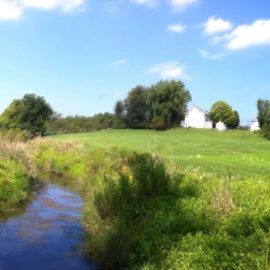Communications & Advocacy

It is the Board members’ responsibility to assure proper communication of the district’s goals and needs between the District, the community, elected officials and its partners.
Internal Communications
Between board and manager
- Communicate the district’s vision and mission to the manager and staff
- Close and regular communication between the board and manager
- Appropriate chain of communications
- Regular transfer of information between manager and board between board meetings
- Participation on committees
Facilitate Internal Communication
Assure that there is an adequate internal communication between management, staff and the board:
- An established chain of command and information exchange
- Regular staff meetings
- Appropriate staff input to board decisions and policy making
- Appropriate staff participation at board meetings Interaction of staff, board and partners on committees
Seek informal opportunities for communications through activities such as
- Retreats
- Special events
- Banquets
- Envirothon
- Field Trip and tours
External Communications
Community communication of district activities and programs should use media such as:
- Newsletters
- Press Releases
- Annual Report
- Participation in fairs and special events
- Webpages
Agency/Partner Communications
- Mutual participation on committees and advisory boards
- Participation in strategic and annual planning
- Mutual training opportunities
- Shared projects (i.e. Watershed projects, workshops, NRCS projects)
Advocacy
It is a core responsibility of the Board member to communicate the goals and needs of the District to elected officials.
Formal & Informal Communication Methods
Directors should take advantage of these formal and informal communication methods to advocate to elected officials.
- Memorandum of Understanding
- Capital Day
- Legislative Breakfast/lunch
- Testimony at hearings
- Bus tours of field sites
- Participation on municipal and state advisory boards and committees
- Provide written comments on legislation
- Regular update meetings to legislators
- Presentation at community meetings & service clubs
- Phone calls Invitation of their participation in district activities (i.e. Envirothon, Banquet)
Networking
Look for opportunities to network with local, state and national organizations with common cause.
- Nominating Organizations
- Pennsylvania Association of Conservation Districts
- National Association of Conservation District
- Conservation Organizations (i.e. Watershed groups, Trout Unlimited, Pheasants Forever, etc.)
Getting the Message Out
An organized, concise, justifiable request for targeted needs.
- The board should select champions to convey the district’s message and needs to elected officials.
- Board members should follow up to address legislators’ questions and needs.
Every Board Member Communicates
Board members are nominated by local organizations and are a conduit for communication between the nominating organization and the board of directors.
Each board member should have an active role in communicating the district’s mission and programs to the community.